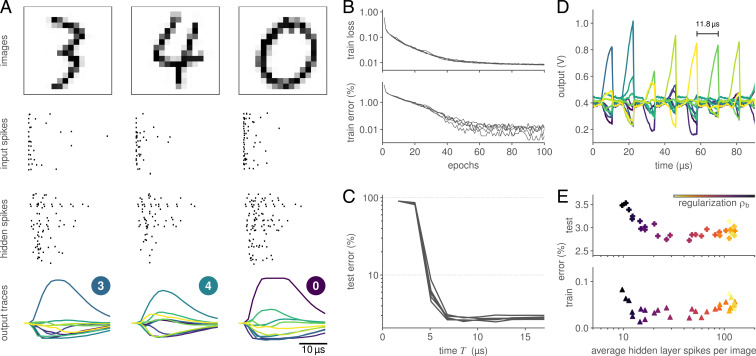Fig. 3.
Classification of the MNIST dataset. (A) Three snapshots of the SNN activity, consisting of the downscaled 16 × 16 input images (Top), spike raster of both the input spike trains and hidden-layer activity (Middle), and readout neuron traces (Bottom). The latter show a clear separation, and, hence, a correct classification of the presented images. (B) Loss and accuracy over the course of 100 training epochs for five initial conditions. (C) The time to decision is consistently below 10 µs. Here, the classification latency was determined by iteratively reevaluating the max-over-time for output traces (see A) restricted to a limited interval . (D) This low latency allowed us to inject an image every 11.8 µs, corresponding to more than 85,000 classifications per second. This was achieved by artificially resetting the state of the neuromorphic network in between samples. (E) The neuromorphic system can be trained to perform classification with sparse activity. When sweeping the regularization strength, a state of high performance was evidenced over more than an order of magnitude of hidden-layer spike counts.

